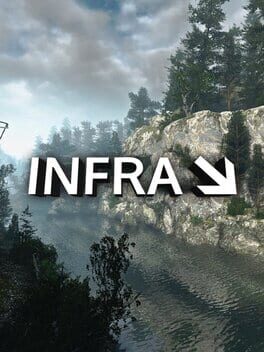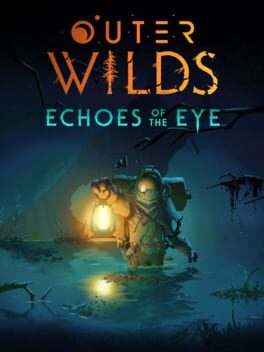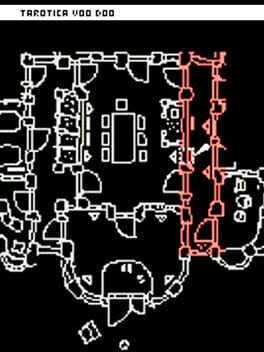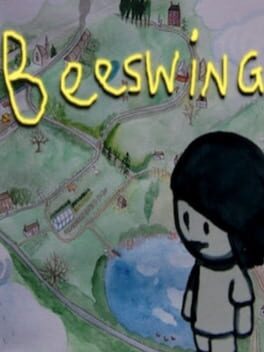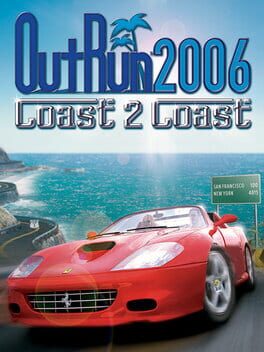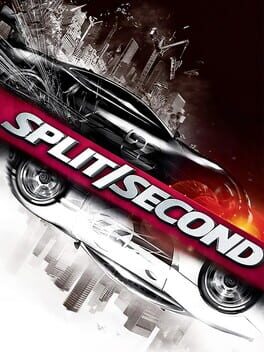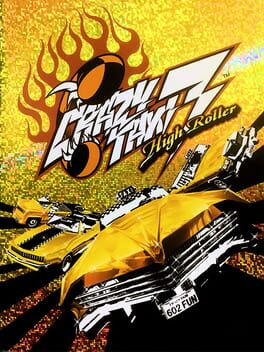BeachEpisode
2022
2016
“Whatever he’s planning, it’s going to happen, and I don’t want to be here when it does. If there’s one thing I’m sure of; everything’s about to fall apart”.
A couple days ago, I was calmly and cooly lamenting the way Half Life 1’s cinematic setpieces still remain somewhat unique through to today. There’s something I find incredibly cathartic about cataclysmic things happening to a gigantic facility while the player Mr Bean’s their way through falling platforms and rubble, all the while gormlessly operating critically important, high-powered machinery you have no qualifications for. Everyone wants their FPS to have a shotgun with lots of recoil or something, but I want an elevator shaft sequence with massive casualties.
INFRA is a rough-around-the-edges little anomaly of a game - if it isn’t outsider art, it skirts dangerously close. It’s just so rare for a title to lean so far into its own neuroses alongside such genuinely impressive production values.
Tasked, as a structural analyst, to do a routine survey of the crumbling water treatment facilities on the outskirts of the fictional city of Stalburg, there is little more for the player to do mechanically than take photographs of OSHA violations and flick switches. Even still, the average first playtime of INFRA is 22 hours long. An oftentimes painful linear first-person adventure where the common roadblock is the odd wildly cruel puzzle and level design. It truly begs belief, the shit they make you do in this to earn a crumb of progress.
I really do love the good majority of what this game accomplishes - there’s an engrossing sense of scale on the journeys between the puzzles. Though the game is linear, there is a lot of wriggle room for alternating paths and solutions to key events, all the while the set designers filled every nook and cranny with surprisingly mindful details and assets that make the city feel lived-in and rewarding to poke around. It’s even replete with intense large-scale destructive setpieces that remind me of something like Disaster Report, and the player character's dialogue has that tired in-over-his-head everyman energy that I luvv. Navigation requires careful deliberation as you have to scan the environment for the most subtle nudges in the right direction; finding keys, notes containing passwords, manuals explaining how to operate machinery. Dizzyingly many things here are purely optional and only affect your playthrough way down the line, if at all.
Where INFRA loses me is in how rotely demanding it can be. The kinds of puzzles here are these legitimately tricky logic tests that tend to be sprawled out over a large playable area - often obscured by too much detail and not-enough lighting - meaning that to even test out a hypothesis, the player has to do a not-insignificant amount of travel between inputs. The developers have this undeniable keen interest in civil engineering, the way these facilities and utilities are connected to one another in a grand network of city planning and infrastructure…… but it’s the sole thing that extends the playtime, and it fucking wore me down. There’s a grand conspiracy element to the game’s overarching story and I could hardly pay it any mind because I just wanted the water on the floor to stop electrocuting me. It wasn’t until the game entered its closing act where I finally felt as though I had clocked to the designer’s puzzle logic. I wanted INFRA to kill its darlings, cull extraneous sections and give me more simple problems to solve - but the game’s more interesting with the sheer friction it poses. Imagine you turned the difficulty of Half Life 1 to the max, only for it remove all of the enemies and guns, & make Black Mesa more annoying instead.
While the game routinely lost its balance on the knife’s edge between demanding and frustrating, I found myself completely enamoured by the way Loiste Interactive hyperfocuses on the spectacle, genuine lived-in immersion, of the decaying infrastructure of the fictional city of Stalburg. Allegedly inspired by watching a documentary on the crumbling network of civil engineering that the USA relies heavily on, INFRA is a game about corruption and decay. It’s a crude image, one of vainglorious despots causing corporate neglect to eat away at the infrastructure we rely on, cataloguing the rebar and cabling that protrudes the crumbling concrete like scabs, but it’s truuu.
INFRA ain’t a game for everyone, but there’s a lot here for folk with saintly patience to appreciate. If you do give it a miss, please at the very least say “tyvm :3” to the overpass you drive under for being kind enough not to fall directly on top of you. It’s very tempted, I’d be too.
A couple days ago, I was calmly and cooly lamenting the way Half Life 1’s cinematic setpieces still remain somewhat unique through to today. There’s something I find incredibly cathartic about cataclysmic things happening to a gigantic facility while the player Mr Bean’s their way through falling platforms and rubble, all the while gormlessly operating critically important, high-powered machinery you have no qualifications for. Everyone wants their FPS to have a shotgun with lots of recoil or something, but I want an elevator shaft sequence with massive casualties.
INFRA is a rough-around-the-edges little anomaly of a game - if it isn’t outsider art, it skirts dangerously close. It’s just so rare for a title to lean so far into its own neuroses alongside such genuinely impressive production values.
Tasked, as a structural analyst, to do a routine survey of the crumbling water treatment facilities on the outskirts of the fictional city of Stalburg, there is little more for the player to do mechanically than take photographs of OSHA violations and flick switches. Even still, the average first playtime of INFRA is 22 hours long. An oftentimes painful linear first-person adventure where the common roadblock is the odd wildly cruel puzzle and level design. It truly begs belief, the shit they make you do in this to earn a crumb of progress.
I really do love the good majority of what this game accomplishes - there’s an engrossing sense of scale on the journeys between the puzzles. Though the game is linear, there is a lot of wriggle room for alternating paths and solutions to key events, all the while the set designers filled every nook and cranny with surprisingly mindful details and assets that make the city feel lived-in and rewarding to poke around. It’s even replete with intense large-scale destructive setpieces that remind me of something like Disaster Report, and the player character's dialogue has that tired in-over-his-head everyman energy that I luvv. Navigation requires careful deliberation as you have to scan the environment for the most subtle nudges in the right direction; finding keys, notes containing passwords, manuals explaining how to operate machinery. Dizzyingly many things here are purely optional and only affect your playthrough way down the line, if at all.
Where INFRA loses me is in how rotely demanding it can be. The kinds of puzzles here are these legitimately tricky logic tests that tend to be sprawled out over a large playable area - often obscured by too much detail and not-enough lighting - meaning that to even test out a hypothesis, the player has to do a not-insignificant amount of travel between inputs. The developers have this undeniable keen interest in civil engineering, the way these facilities and utilities are connected to one another in a grand network of city planning and infrastructure…… but it’s the sole thing that extends the playtime, and it fucking wore me down. There’s a grand conspiracy element to the game’s overarching story and I could hardly pay it any mind because I just wanted the water on the floor to stop electrocuting me. It wasn’t until the game entered its closing act where I finally felt as though I had clocked to the designer’s puzzle logic. I wanted INFRA to kill its darlings, cull extraneous sections and give me more simple problems to solve - but the game’s more interesting with the sheer friction it poses. Imagine you turned the difficulty of Half Life 1 to the max, only for it remove all of the enemies and guns, & make Black Mesa more annoying instead.
While the game routinely lost its balance on the knife’s edge between demanding and frustrating, I found myself completely enamoured by the way Loiste Interactive hyperfocuses on the spectacle, genuine lived-in immersion, of the decaying infrastructure of the fictional city of Stalburg. Allegedly inspired by watching a documentary on the crumbling network of civil engineering that the USA relies heavily on, INFRA is a game about corruption and decay. It’s a crude image, one of vainglorious despots causing corporate neglect to eat away at the infrastructure we rely on, cataloguing the rebar and cabling that protrudes the crumbling concrete like scabs, but it’s truuu.
INFRA ain’t a game for everyone, but there’s a lot here for folk with saintly patience to appreciate. If you do give it a miss, please at the very least say “tyvm :3” to the overpass you drive under for being kind enough not to fall directly on top of you. It’s very tempted, I’d be too.
1996
Cleopatra was a Ptolemy, and as was the custom of that dynasty, her parents were brother and sister. In fact, kings were required to marry their sisters in order to acquire their power. Cleo herself was married to her 10-year-old brother when she was 18 years old. In keeping with her genetic line, she bore marks of inbreeding, one of which was chibi.
This review contains spoilers
Echoes of the Eye seems kind of like a square peg, round hole situation, to be honest. They wanted to tell this story about owl matrix and a prisoner, but had to fit it into the confines of the game they had already designed, and I dont think it worked.
I need to get more objective distance from it, but letting it sit with me so far, I think I Intensely Dislike the DLC, which I feel has nearly none of the elements that I liked about the base game. I just kinda wish I could forget I ever played it, and not so that I could play it again fresh like I wish I could do with the rest of the game. The initial puzzle of figuring out what and where The Stranger is is fantastic and straight out of vanilla OW, as well as the first couple times around the track as you greedily explore the surface world. It’s incredibly atmospheric; even the dream world is full of great atmosphere. But unlike the base game, there’s zero substance to any of it. In the DLC for the archaeological simulator, you learn nothing about the people on The Stranger nor what they were about. Other than they’re spooky horror aliens that communicate entirely via homemade found footage horror movies and jack into a big VR simulation of an early 2010s Slenderman fangame that you need to scour to assemble a strategy guide for. The goal of the whole thing is to find three sacred cheat codes, all to release a dude who’ll play the theremin.
The biggest problem is that it feels like an entirely different game stapled on top of Outer Wilds. OW’s biggest strength is that all these disparate areas that operate according to their own rules are cohesively tied together by a common set of systems and mechanics that work everywhere. Except in the DLC area, where none of the tools from the base game do anything, not even your knowledge of how to move your character around because you spend hours of it outside your suit slowly walking around in the dark. Even your rumour board stays blank because there are no rumours to learn. One of those mechanics in the base game and a fantastic piece of design work are the quantum laws, which are so consistently applied in so many places that you can just organically pick them up via osmosis. There are a few places in there where they give an explicit lesson if you need a little help, but most people I’ve talked to seem to figure out and apply at least one of them on their own, and it makes you feel like a brain genius. Here, they super transparently try to recreate that with a set of rigid laws within such a confined scale that solutions feel arbitrary and are often found by repeatedly beating the same brick wall.
I need to get more objective distance from it, but letting it sit with me so far, I think I Intensely Dislike the DLC, which I feel has nearly none of the elements that I liked about the base game. I just kinda wish I could forget I ever played it, and not so that I could play it again fresh like I wish I could do with the rest of the game. The initial puzzle of figuring out what and where The Stranger is is fantastic and straight out of vanilla OW, as well as the first couple times around the track as you greedily explore the surface world. It’s incredibly atmospheric; even the dream world is full of great atmosphere. But unlike the base game, there’s zero substance to any of it. In the DLC for the archaeological simulator, you learn nothing about the people on The Stranger nor what they were about. Other than they’re spooky horror aliens that communicate entirely via homemade found footage horror movies and jack into a big VR simulation of an early 2010s Slenderman fangame that you need to scour to assemble a strategy guide for. The goal of the whole thing is to find three sacred cheat codes, all to release a dude who’ll play the theremin.
The biggest problem is that it feels like an entirely different game stapled on top of Outer Wilds. OW’s biggest strength is that all these disparate areas that operate according to their own rules are cohesively tied together by a common set of systems and mechanics that work everywhere. Except in the DLC area, where none of the tools from the base game do anything, not even your knowledge of how to move your character around because you spend hours of it outside your suit slowly walking around in the dark. Even your rumour board stays blank because there are no rumours to learn. One of those mechanics in the base game and a fantastic piece of design work are the quantum laws, which are so consistently applied in so many places that you can just organically pick them up via osmosis. There are a few places in there where they give an explicit lesson if you need a little help, but most people I’ve talked to seem to figure out and apply at least one of them on their own, and it makes you feel like a brain genius. Here, they super transparently try to recreate that with a set of rigid laws within such a confined scale that solutions feel arbitrary and are often found by repeatedly beating the same brick wall.
2017
The story behind the development of this game is rather cute, much of which is outlined in the wonderful design document it comes packaged with. Development started in 1993 for the MSX as a hobbyist undertaking and reached a presentable state around 1997, where it was intended to be shown off at Comiket. Sadly, Ikushi Togo's disk drive crashed, causing a dramatic loss of the machine language source code and other data. After a lull of many years where Tarotica Voo Doo would lay dormant, an old demo rom was eventually showcased at Comiket in 2014 and received such tremendous support and praise, the developer realised he had to see the game through. Rather than taking the comparatively easy route and developing the game with more modern tools, they instead stuck to their guns and rewrote the game completely from scratch, once again for the MSX.
A self-imposed challenge that paid dividends - Tarotica Voo Doo operates under its hardware restrictions with such clear clarity of intent, filled with design quirks rare and unseen in games old and new. Where the visual style is indeed crude; being the product of mouse-drawn pixel art, it complements the uniquely tactile control scheme to the point where it feels like flicking through charming flipbook animations - watching the mansion map fill out in the same vein as a growing doodle on a bored schoolkid’s workbook margin or exploratory boardgame. The developer has expressed that they find games less interesting when actions are automated, and Tarotica Voo Doo’s puzzling and combat incorporates an utterly fascinating control scheme that demands deliberate movement and interaction. It’s no surprise to me that the developer has their eyes on getting a project to the Playmate system.
I wanted to be a little vague, this is a 2-hour game that deserves to be played and appreciated. I swear to god I think this mansion has left an imprint on me.
A self-imposed challenge that paid dividends - Tarotica Voo Doo operates under its hardware restrictions with such clear clarity of intent, filled with design quirks rare and unseen in games old and new. Where the visual style is indeed crude; being the product of mouse-drawn pixel art, it complements the uniquely tactile control scheme to the point where it feels like flicking through charming flipbook animations - watching the mansion map fill out in the same vein as a growing doodle on a bored schoolkid’s workbook margin or exploratory boardgame. The developer has expressed that they find games less interesting when actions are automated, and Tarotica Voo Doo’s puzzling and combat incorporates an utterly fascinating control scheme that demands deliberate movement and interaction. It’s no surprise to me that the developer has their eyes on getting a project to the Playmate system.
I wanted to be a little vague, this is a 2-hour game that deserves to be played and appreciated. I swear to god I think this mansion has left an imprint on me.
This feels like a 'your mileage may vary' thing, but the central character shuffle gimmick in Get It Together acts as too much of a setback for all of these microgames and bogs the variety down. The fact that every microgame has a redesign in mind for the character you're tackling it with is a very interesting quirk that works well on paper, but the game doesn't utilise it very well and typically makes the microgames feel a little too samey - you generally just have to make your character hit something or go from a to b. This probably could have been alleviated if the microgames had fixed characters, allowing the designers to go crazy within a specific control framework, but I'm not a professional game designer, like Wario.
My only real exposure to Armored Core was this MAD I had somehow stumbled into back in 2011, so I honestly couldn’t say that I fully knew what this series was about (aside from laser lightshows and missile contrail carnivals) until I finally gave AC6 a shot.
Game good! With courteous thanks to how easy it is to fall into builds that turn enemies into drywall it kind of eliminated all concerns I had about spending more time diagnosing my mech in the equipment menu than actually playing the game. Moreover, the straight-from-the-tap gameplay delivery system of a farcking mission select screen, it’s so lean and mean in a way I had long since given up on the idea of FromSoft ever going for.
In all honesty more than anything I just think this game is beautiful. Such a fully-fledged and well-rounded exploration of what “mech” means. You have your piloted robots run the gamut from sleek and amphibian Metal Gear RAYs, to cubic mili-utilitarian Mechwarriors, to plastic-looking Small Soldiers. There’s an impressive devotion to building a sense of historicity and design ethos for each of the factions and corporations.
I love the sheer depth, detail and scale put into the environs. There is a relatively understated mission where you go down into a mine and it had me gawking at the set dressing for nearly half an hour, just this absolutely painstakingly realised devotion to depicting ‘Industry x1000’. One thing that always gets me is these overhanging industry locales, like an impossibly large train junction hanging precariously miles above the ground, city-wide of tracks landing on the factories below and standing bolt upright. The smell of lead paint absolutely fucking HUMS off this game man. With little human-sized walkways and doors and staircases peppering the landscape for good measure the illusion of scale is thoroughly sold to me. Incredibly illustrative quality to this game. Just gushing with calamitous industrial might, a world suffocating itself in an iron eggshell. Architecture that commands tone and mood. It's cooler than the mechs themselves.
also holy shit allmind‼️‼️‼️
Game good! With courteous thanks to how easy it is to fall into builds that turn enemies into drywall it kind of eliminated all concerns I had about spending more time diagnosing my mech in the equipment menu than actually playing the game. Moreover, the straight-from-the-tap gameplay delivery system of a farcking mission select screen, it’s so lean and mean in a way I had long since given up on the idea of FromSoft ever going for.
In all honesty more than anything I just think this game is beautiful. Such a fully-fledged and well-rounded exploration of what “mech” means. You have your piloted robots run the gamut from sleek and amphibian Metal Gear RAYs, to cubic mili-utilitarian Mechwarriors, to plastic-looking Small Soldiers. There’s an impressive devotion to building a sense of historicity and design ethos for each of the factions and corporations.
I love the sheer depth, detail and scale put into the environs. There is a relatively understated mission where you go down into a mine and it had me gawking at the set dressing for nearly half an hour, just this absolutely painstakingly realised devotion to depicting ‘Industry x1000’. One thing that always gets me is these overhanging industry locales, like an impossibly large train junction hanging precariously miles above the ground, city-wide of tracks landing on the factories below and standing bolt upright. The smell of lead paint absolutely fucking HUMS off this game man. With little human-sized walkways and doors and staircases peppering the landscape for good measure the illusion of scale is thoroughly sold to me. Incredibly illustrative quality to this game. Just gushing with calamitous industrial might, a world suffocating itself in an iron eggshell. Architecture that commands tone and mood. It's cooler than the mechs themselves.
also holy shit allmind‼️‼️‼️
1997
I've grown far too accustomed to Nintendo's hyper-polished first-party titles. The corporate-feeling slurry that is by design incapable of alienating because it does everything "right". Saccharine, inoffensive, the personality of a free cereal toy.
Yoshi's Story is a game from their repertoire that is instead... so genuinely baffling from top to bottom, riddled with curious imperfections large to small, each playing a part in reminding me that the people who make their games are human. The sensation that every member on the team contributed a few ideas into a lucky draw hat, only for every single one of the scraps of paper to be used instead, regardless of how fucked that'll make the game end up.
Yoshi controls like one of those jelly spike yoyo balls, heavily whipping around with a palpable sense of velocity in stages that often demand complete precision. The stages are sprawling, filled with one-time-only mechanics, enemies, hazards and puzzles, and the game is as excited to introduce you to them as it is to throw them out of the cot. Often elusive in the way you're supposed to approach them that they demand experimentation, luck, or just feel outright broken. I can see myself diving back in for a replay at some point just to explore! Weirdass music, cute paper craft look. Psychotic scoring and goal system that felt a lot of fun to wrap my head around, you essentially need to go against your Gamer instincts just to see everything a level has to offer. ("wait, I can just, finish a level whenever???") Yoshi's Story feels genuinely confused, it made ME genuinely confused, and I relish that! This game isn't great, but it's interesting, and that means somethin.
https://www.youtube.com/watch?v=_G7AS50NAwM
Yoshi's Story is a game from their repertoire that is instead... so genuinely baffling from top to bottom, riddled with curious imperfections large to small, each playing a part in reminding me that the people who make their games are human. The sensation that every member on the team contributed a few ideas into a lucky draw hat, only for every single one of the scraps of paper to be used instead, regardless of how fucked that'll make the game end up.
Yoshi controls like one of those jelly spike yoyo balls, heavily whipping around with a palpable sense of velocity in stages that often demand complete precision. The stages are sprawling, filled with one-time-only mechanics, enemies, hazards and puzzles, and the game is as excited to introduce you to them as it is to throw them out of the cot. Often elusive in the way you're supposed to approach them that they demand experimentation, luck, or just feel outright broken. I can see myself diving back in for a replay at some point just to explore! Weirdass music, cute paper craft look. Psychotic scoring and goal system that felt a lot of fun to wrap my head around, you essentially need to go against your Gamer instincts just to see everything a level has to offer. ("wait, I can just, finish a level whenever???") Yoshi's Story feels genuinely confused, it made ME genuinely confused, and I relish that! This game isn't great, but it's interesting, and that means somethin.
https://www.youtube.com/watch?v=_G7AS50NAwM
2014
"A good tree has victims".
Stare close enough at the screen and you start to see the human hands appreciatively building every one of Beeswing's vignettes. I was thoroughly not expecting a game to understand, to so deftly and honestly articulate grief, nostalgia and mending. Beeswing is just honest, It’s not trying to impress anyone or manipulate them into feeling something, it simply wishes to exist - just as its inhabitants live quietly near and far from their loved ones, opening up to anyone who'll listen. Beeswing isn’t sad, but it isn’t happy either. It recounts the lives of (I assume) people the developer knew growing up with a plain biographical melancholy that is difficult to properly explain. I’m so used to media recounting horrible events, making me depressed for the sake of a narrative that’s supposed to mean something. But Beeswing never tried to bring me down, in fact it’s so clean in its indifference to how the player feels that it would seem cold if not for how tangible and raw the things it says and the way it shows you them are. A recurring motif in this game in itself is this kind of honesty, not necessarily to "make the most" of our limited time on this earth, but to live true - to yourselves and others, as it's the greatest way to reciprocate love.
Stare close enough at the screen and you start to see the human hands appreciatively building every one of Beeswing's vignettes. I was thoroughly not expecting a game to understand, to so deftly and honestly articulate grief, nostalgia and mending. Beeswing is just honest, It’s not trying to impress anyone or manipulate them into feeling something, it simply wishes to exist - just as its inhabitants live quietly near and far from their loved ones, opening up to anyone who'll listen. Beeswing isn’t sad, but it isn’t happy either. It recounts the lives of (I assume) people the developer knew growing up with a plain biographical melancholy that is difficult to properly explain. I’m so used to media recounting horrible events, making me depressed for the sake of a narrative that’s supposed to mean something. But Beeswing never tried to bring me down, in fact it’s so clean in its indifference to how the player feels that it would seem cold if not for how tangible and raw the things it says and the way it shows you them are. A recurring motif in this game in itself is this kind of honesty, not necessarily to "make the most" of our limited time on this earth, but to live true - to yourselves and others, as it's the greatest way to reciprocate love.
2022
A sapphic love letter - a daisy chain of vignettes that offer glimpses into other creative and influential media powerhouses, metered out by the task of juggling keys and receptacles in limited inventory slots across a vast steel complex. Too much mule work for its weight in silver in my humble. This search for lost love where ur body is weighed down by deprivations of liberty and soul rings so hollow to me when it's so clockable under a very narrow scope of media that strikes the same chimes so much better. More to the point I think I'm just too depressed to find any spark in this. Since I've been resorting to it recently, the flashes of self-harm imagery just piss me the fuck off.
Signalis a visual juggernaut that can dole out amazing one-two punches of sight and sound when it wants to, but the genre darling glazing is too sickly for my blood, I'd roll my eyes at practically every cutscene calling to something in the creators' Anilist Previously Watched stack. Not a classic survival horror head either, sorry not for me, not a problem in and of itself.
Signalis a visual juggernaut that can dole out amazing one-two punches of sight and sound when it wants to, but the genre darling glazing is too sickly for my blood, I'd roll my eyes at practically every cutscene calling to something in the creators' Anilist Previously Watched stack. Not a classic survival horror head either, sorry not for me, not a problem in and of itself.
2010
One of the most lastingly interesting core concepts any driving game has ever had - a competitive arcade racer where you indirectly attack your opponents by triggering explosive stage events of increasing levels of large-scale Bayhem. It leaves you with a wonderfully unique ebb and flow where the rewards you trigger with hard-earned resources come with their own risks. Clutch moments where you dare to drift dangerously close to an idle wrecking ball or gas station for a little more speed, unsure whether an opponent is going to pull the trigger. Track-wrending power plays that act as an activatable Uncharted setpiece will make short work of the opponents in front before barreling towards the enabler themselves. Big sweaty teeth-shattering adrenaline mill incarnated as a game. Surprisingly true to its name is the sheer level of difficulty offered here. To place 1st on many of these missions feels deviously tempered by the rubber-banding for it to always come down to the last second. Compliments to the chefs on the ones and twos for some absolutely stellar sound design too.
The PC port is rough; locked to 30, no living online mode, controller support is present but you'll have to navigate the menus with the keyboard, and there is an autosave issue that can corrupt your racing profile. It's also missing one of the DLC tracks, but one of the most popular Steam guides has an easy method to mod it in.
Overall my enjoyment of the game feels a little hamstrung by the slippery controls and low content variety overall. Truly feels blistering with potential, and I hope it gets realised some day by someone willing to take up the mantle.
The PC port is rough; locked to 30, no living online mode, controller support is present but you'll have to navigate the menus with the keyboard, and there is an autosave issue that can corrupt your racing profile. It's also missing one of the DLC tracks, but one of the most popular Steam guides has an easy method to mod it in.
Overall my enjoyment of the game feels a little hamstrung by the slippery controls and low content variety overall. Truly feels blistering with potential, and I hope it gets realised some day by someone willing to take up the mantle.
2023
Wow kind of loved this. One of those plinky ploinky IcoXJourney type games that actually manages to completely seal the deal with some genuinely astounding world design that compliments the character movement. This laser focus on the goal of verticality and the notches inbetween - tactile, weighty, arduous toil as you use your climbing gear to best the challenges the geometry imposes. Gushing with a sense of true scale, milestoned by countless opportunities to pan the camera back at the places you’ve come from and the mountaineering feats you’ve cleared. Dense and well-considered little pockets of civilisation in between crumbling pathways and inclines, full of the kind of coastal town fishery imagery I am a cow for. Beautiful and breathless game imo. Shame it undoes itself with all of these collectables and wordy diary entries that explain away the superlunary mystery of da world, although I’m fickle enough to kind of think I’d have given them a pass if the font choice was more diegetic lol.
Jusant is 1 for da perverts who blush at the Google Image Search: “Abandoned Crab Traps stacked rly high”.
Jusant is 1 for da perverts who blush at the Google Image Search: “Abandoned Crab Traps stacked rly high”.
2002
Breakneck pacing through linear design cleverly made to feel open, combined with the themes of lost agency and the powers one serves betraying them, which juxtaposes excellently by finally facing off with the pinnacle of power Samus used to be - now a horrific weapon to be feared and avoided. I love how naked it all makes you feel, Samus has her powers literally surgically removed from her body, your superiors withhold upgrades from you and lord complete command of your exploration, the new Fusion Suit follows a very bare, muscular system aesthetic, and that's the point.
Your adversary is the SA-X, a fully suited and booted walking sun, it practically glides through the station like a hot knife through butter - but despite inferior firepower and four layers of Federation protocol to sieve through, you've got the one thing it lacks. Wits.
If I could change one thing, it'd be for the opening act to be far less verbose and slow. If I could change a second thing, it'd be to make power bombs actually useful against bosses.
Your adversary is the SA-X, a fully suited and booted walking sun, it practically glides through the station like a hot knife through butter - but despite inferior firepower and four layers of Federation protocol to sieve through, you've got the one thing it lacks. Wits.
If I could change one thing, it'd be for the opening act to be far less verbose and slow. If I could change a second thing, it'd be to make power bombs actually useful against bosses.
"Maybe life is like a ride on a freeway
Dodging bullets while you're trying to find your way" -unnamed polymath
I know I'm not the only person caught unaware of how they made not only one, but TWO mainline sequels to the Crazy Taxi series. While they may not be fully souped-up reimaginings, Crazy Taxi 2 and 3 contain all of the content in the prior entry plus a little more, it's a little more apt to think of these as expansion packs. What this mercifully does is maintain the lean and mean purity of the breakout title and sprinkle in a handful more options and maps for just the right amount of variety and personalisation.
The most standout addition in these expansions for me is the jump button, it's wild how much this shakes up your approach to the West Coast you'd otherwise be nailed to the ground for. With the ability to scale buildings and a sense of mastery of the course, it's insanely satisfying to defy the will of the sat-nav and take batshit and overly-direct routes to a dropoff point. I particularly love pulling off a crazy boost and landing on top of a highrise in the middle of nowhere and finding that the developers had the foresight to put a hidden customer there as a little treat. This is kind of fucking amazing. Unfettered videogames. The moment I understand how the fuck you're supposed to pull off a Crazy Drift it's over for you all.
If ever you feel the meter calling, the PC version of the game is easily available in a simple google search. Be sure to use the CT3Tweaks fan patch that adds certain optimisations, greater framerate and resolution support. The soundtrack is kind of hilariously bad but it's all stored in the root folder as .ogg files and I'm sure it'll be no problem to customise yourself.
Dodging bullets while you're trying to find your way" -unnamed polymath
I know I'm not the only person caught unaware of how they made not only one, but TWO mainline sequels to the Crazy Taxi series. While they may not be fully souped-up reimaginings, Crazy Taxi 2 and 3 contain all of the content in the prior entry plus a little more, it's a little more apt to think of these as expansion packs. What this mercifully does is maintain the lean and mean purity of the breakout title and sprinkle in a handful more options and maps for just the right amount of variety and personalisation.
The most standout addition in these expansions for me is the jump button, it's wild how much this shakes up your approach to the West Coast you'd otherwise be nailed to the ground for. With the ability to scale buildings and a sense of mastery of the course, it's insanely satisfying to defy the will of the sat-nav and take batshit and overly-direct routes to a dropoff point. I particularly love pulling off a crazy boost and landing on top of a highrise in the middle of nowhere and finding that the developers had the foresight to put a hidden customer there as a little treat. This is kind of fucking amazing. Unfettered videogames. The moment I understand how the fuck you're supposed to pull off a Crazy Drift it's over for you all.
If ever you feel the meter calling, the PC version of the game is easily available in a simple google search. Be sure to use the CT3Tweaks fan patch that adds certain optimisations, greater framerate and resolution support. The soundtrack is kind of hilariously bad but it's all stored in the root folder as .ogg files and I'm sure it'll be no problem to customise yourself.

